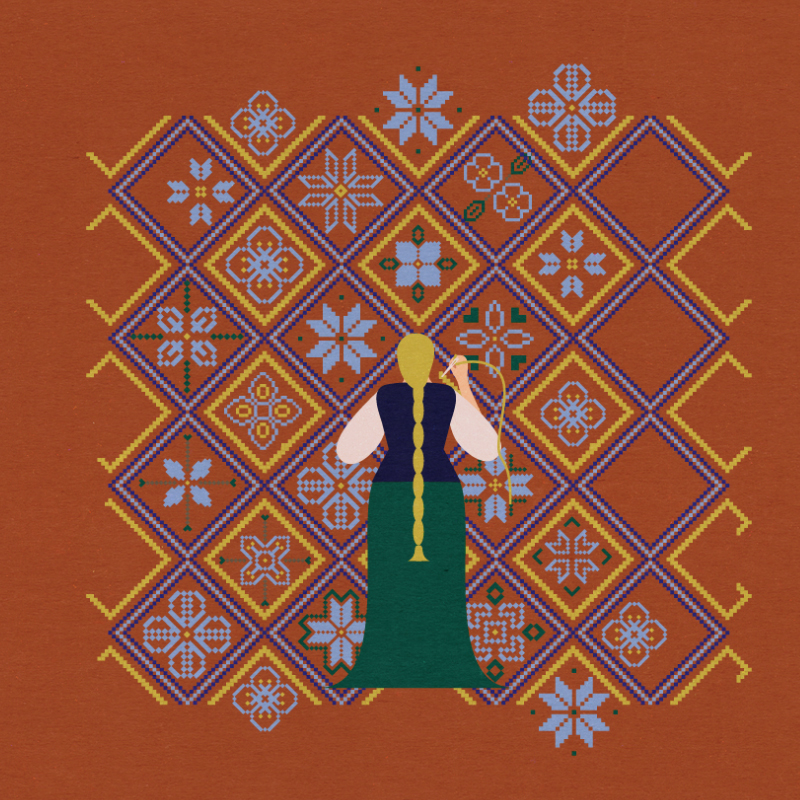Sister Weavers or Ancient Lithuanian Artists?
> BACK TO 100 STORIESListen to this text (Lithuanian):
Lithuanian folk songs often mention sister weavers, looms, and thin canvases. And flax – the plant most commonly used for weaving – became a character who has to suffer a lot before the thin cloth is woven. Sometimes, as sung in a popular song, Lithuania is called a country where blue flax flowers forever: ‘Neither far, nor near – / In the outskirts of Lithuania – / Forever, forever / Flax flowers in blue.’
Flax was highly respected and there were many superstitions associated with sowing and weaving flax in the ancient times. The ancients used to say that the day of the week on which it began to snow in the autumn or on which the sower was born was suitable for sowing flax. The flax seeds were poured into the soil by hand from a woman’s apron. The flax sowers were dressed in very clean and ornate clothes: white trinyčiai (long linen overcoats), feathers in their hats, and needles with long threads in the lapels of their garments. The person who saw the stork first and was taller than average would have to sow. The sowers washed their hands thoroughly before work so that the canvases made of flax fibre would be white. To prevent pests from attacking the flax, the seeds were sprinkled with the holy Easter water. The flax sower who returned home was symbolically whipped with a tuft of flax.
Lithuanian textile – fabric production has a long tradition. Fabrics were mostly woven by women, but there were also men weavers. Girls were taught to weave from an early age: the first textiles girls wove were various ribbons, later they began to weave a dowry for themselves – towels, tablecloths, clothing fabrics. They took this dowry with them when they moved to their husband’s house after marriage. The fabrics were not only used in everyday and home life – they were traded and even used to pay taxes.
In the beginning of the twentieth century, fabric production moved to the factories. The first fabric factory was established in Kaunas in 1920, and was called simply Drobė [Eng. canvas]. It mostly produced woolen fabrics. They were much cheaper than imported fabrics and this made them particularly popular. In 1965, the first and one of the largest factories in Europe for artificial fiber, which was also used in fabric production, was opened in Kaunas.
Although textile creation was considered a craft for a long time, not only in Lithuania but all over the world, today it is considered to be an art in the field of applied arts. Most textile makers in Lithuania are women. They have won a number of important international awards, and their works are admired by exhibition visitors in Kaunas, Vilnius, Riga, Berlin, Bonn and Dortmund. Lithuanian works have been called passionate textiles and enchanting fantastic art. They are often reminiscent of collages that combine different materials, such as tapestries, photography, sculpture, and painting. So the first weavers, it could be said, were a kind of artist who conveyed their feelings and understanding of the world in their fabric patterns.

